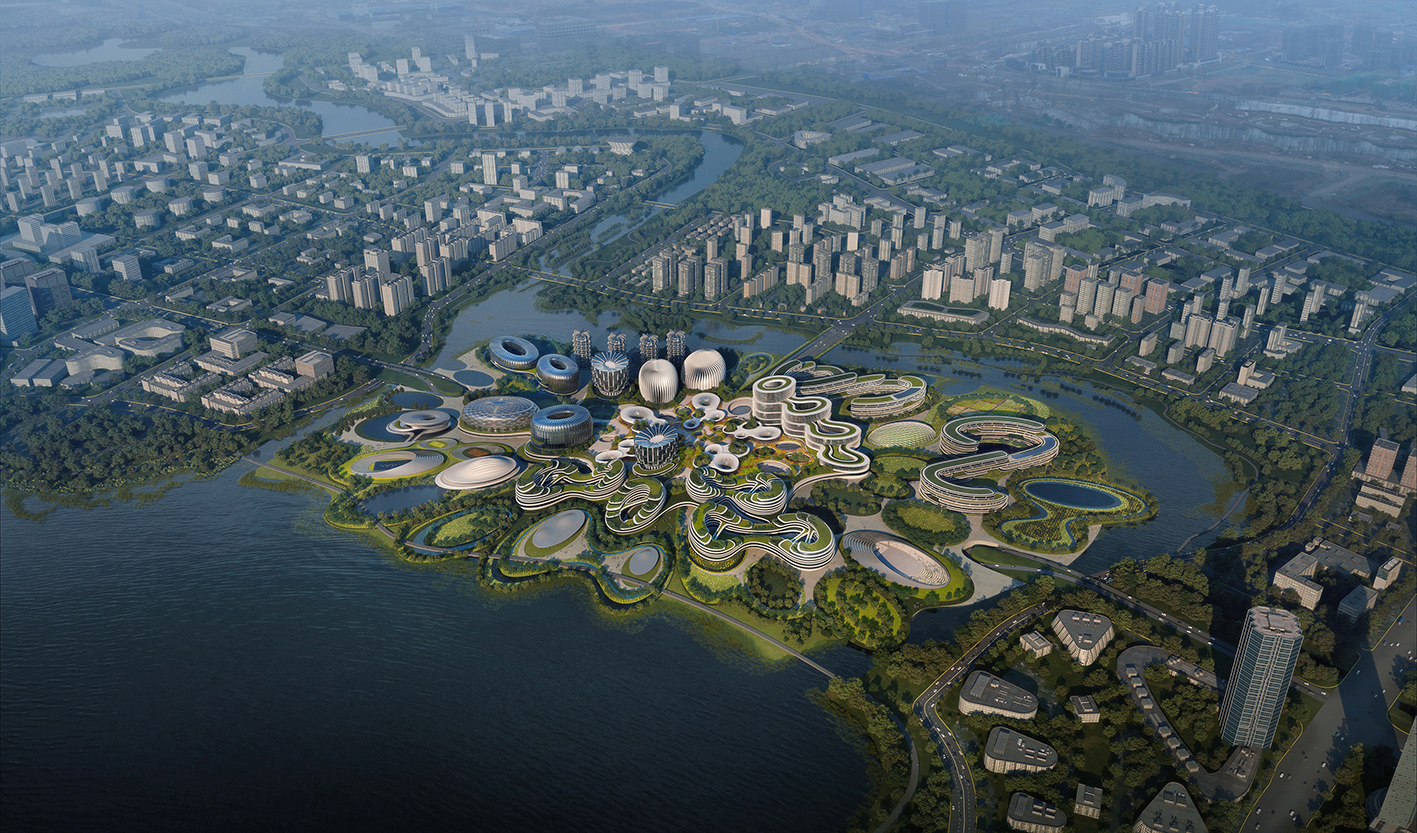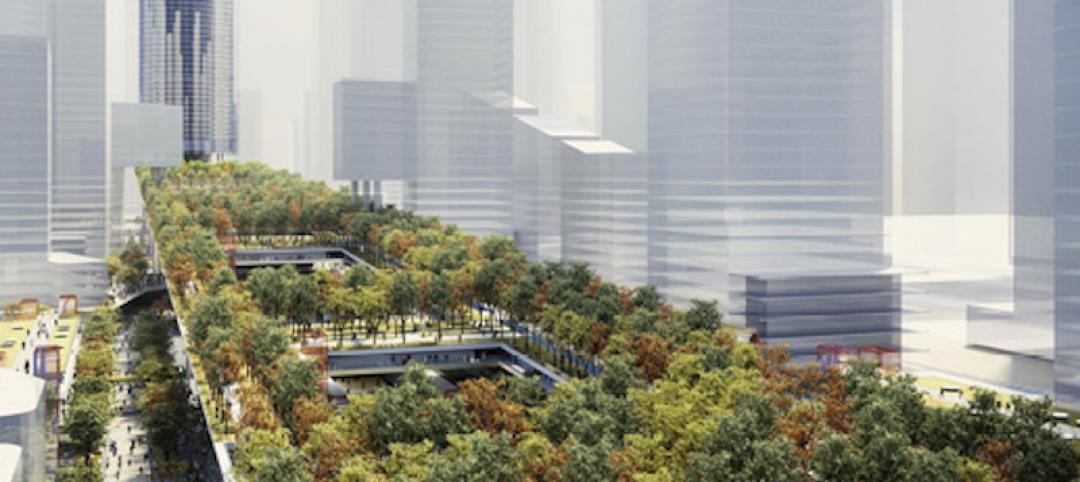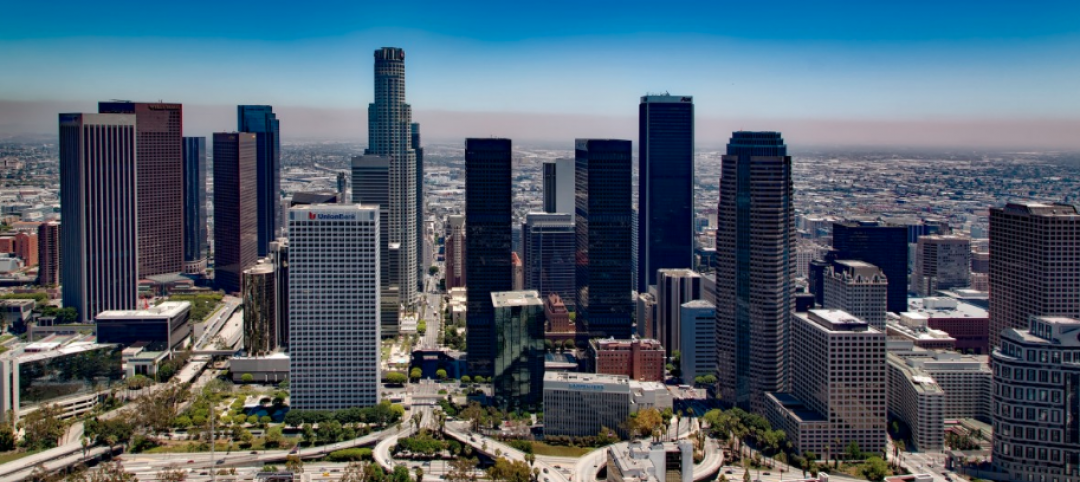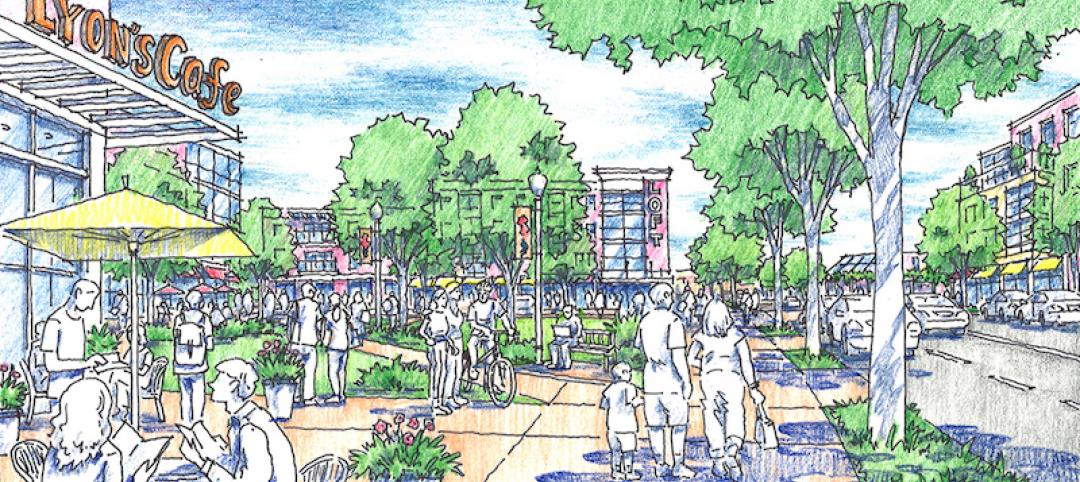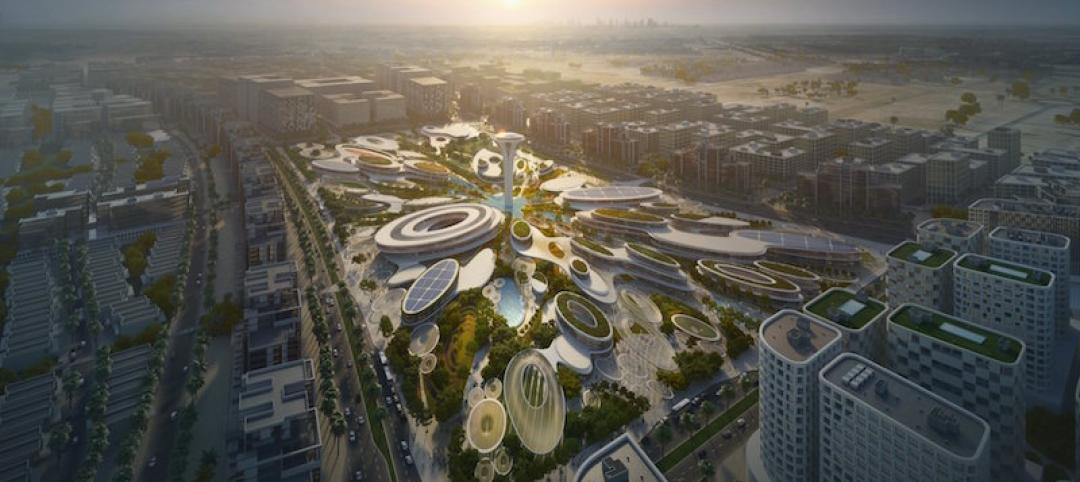China has become home to a third of the world’s “unicorn companies,” technology start-ups valued at over a billion US dollars, with Chengdu, the capital of the Sichuan province, developing into a hub where the computer chips for half the world’s laptops are produced. The area is also a leading producer of mobile hardware. The Tianfu New Area area to the south of the city is now being developed as an ecologically sustainable civic, business, and residential center for China’s technology and research sectors.
Dubbed Unicorn Island, the Zaha Hadid-designed master plan is well underway as its first building, the Start-Up exhibition and conference center, nears completion. The firm did not release many details about the exhibitions center, but did release a new video showcasing the building in its yet-to-be-completed form.
The 67-hectare master plan will help foster the continued growth of China’s digital economy. The mixed-use master plan for 70,000 researchers, office staff, residents, and visitors will include integrated clusters of buildings that surround the island’s central plaza and metro station. The radial layout enables the entire island to be accessed quickly via walking or by bike and newly developed green civic spaces will be interspersed with the building clusters.
See Also: Headspace expands Santa Monica corporate HQ

As part of the project, wetlands of the Tianfu New Area will be reestablished and will serve as water conservation, flood control, and recreation area. Unicorn Island will incorporate natural water management systems and innovations in urban farming technologies to provide residents, workers, and visitors with fresh, locally grown produce.
While the first structure on the island is nearing completion, Zaha Hadid has not released a completion date for the island as a whole.
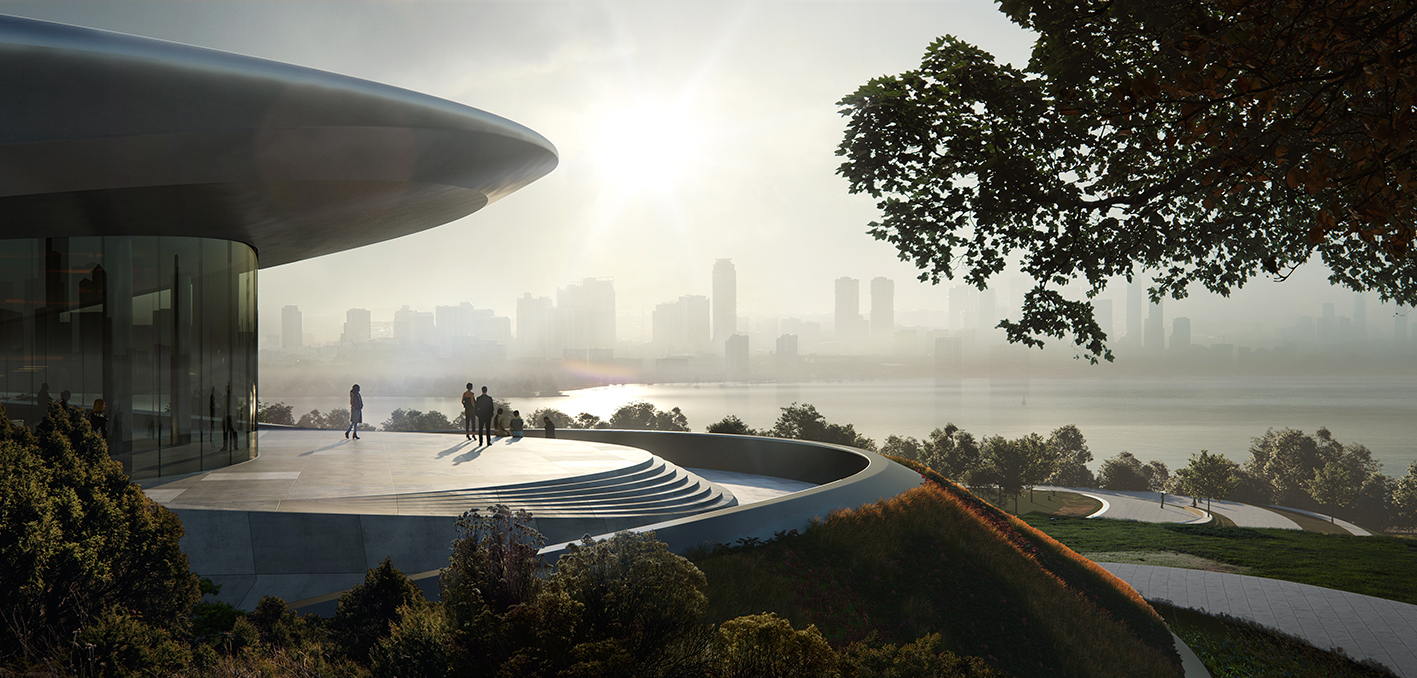
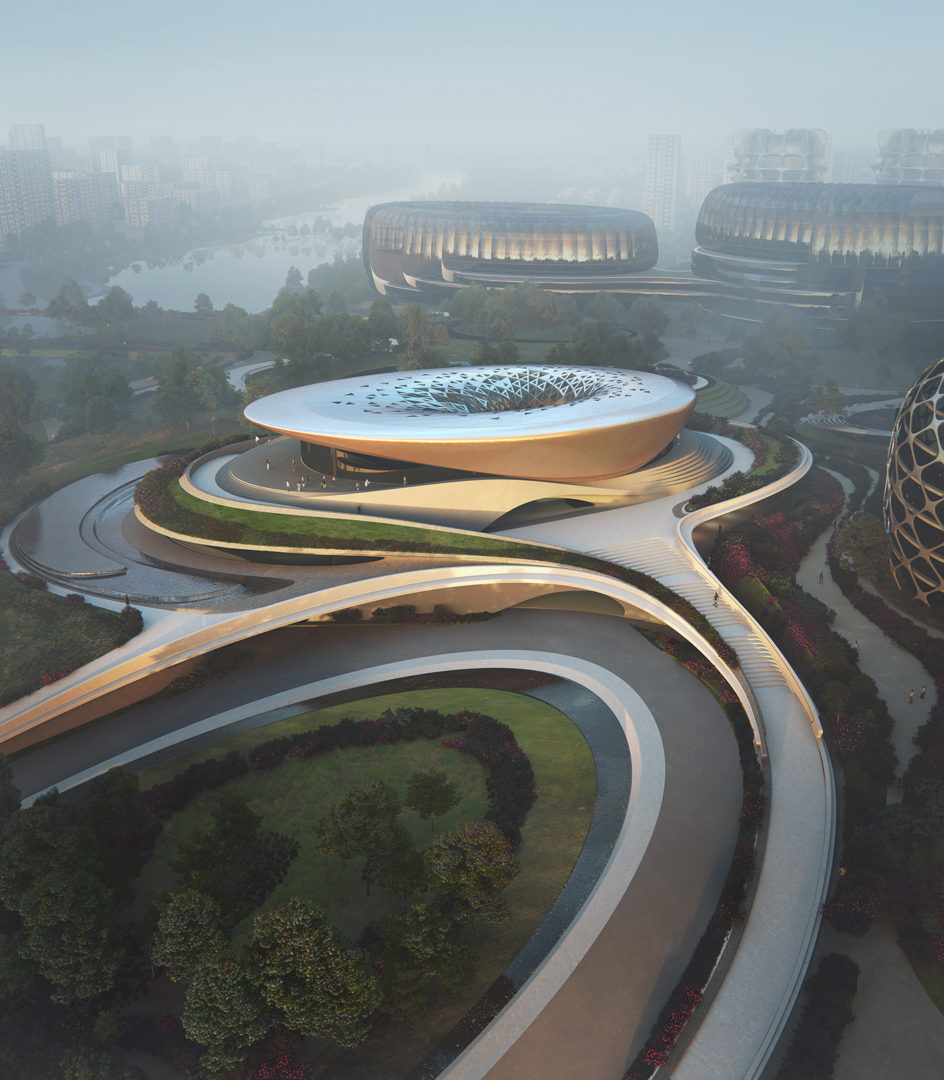

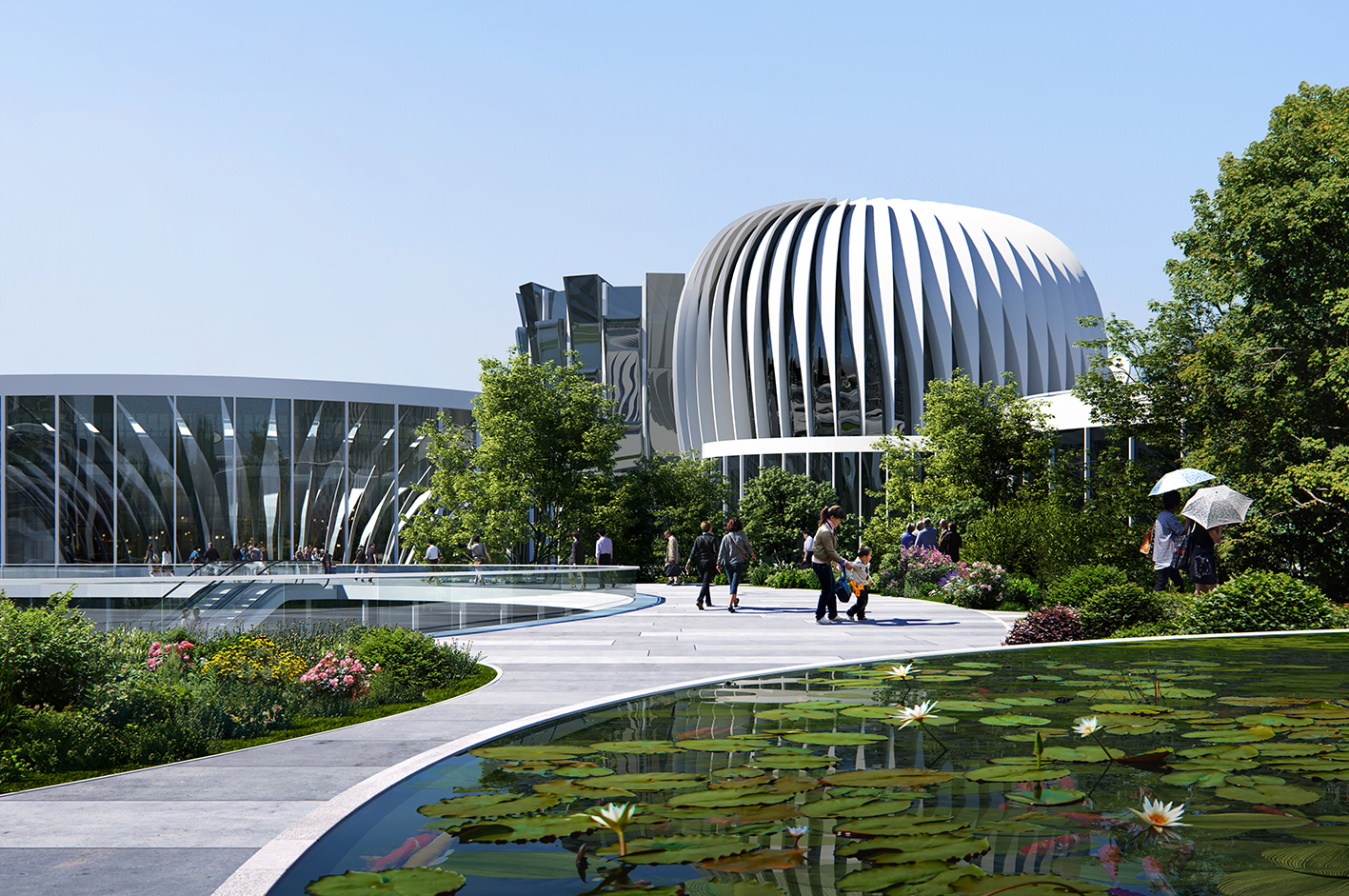
Related Stories
Urban Planning | Jan 25, 2019
Times are changing, and sustainable cities are taking notice
Two recent studies by Pew Research Center and WalletHub shined a light on where we are in the market transformation curve for environmentalism and sustainability.
Urban Planning | Oct 11, 2018
Shenzhen’s new ‘urban living room’
Rogers Stirk Harbour + Partners is designing the project.
Urban Planning | Sep 11, 2018
The advantages of alleys
Believe it or not, alleys started off as public spaces.
Urban Planning | Jul 24, 2018
Deregulation for denser development in Los Angeles moves forward
The aim is to reduce housing costs, traffic congestion.
Urban Planning | Jul 10, 2018
Autonomous vehicles and the city: The urgent need for human- and health-centric policies
Rather than allow for an “evolutionary” adaptation to AVs, we must set policies that frame and incentivize a quicker “revolutionary” transition that is driven by cities, not by auto and tech companies.
Urban Planning | Jul 6, 2018
This is Studio Gang's first design project in Canada
The building’s hexagonal façade will provide passive solar heating and cooling.
Urban Planning | Jun 18, 2018
In the battle of suburbs vs. cities, could both be winning?
Five years ago, experts were predicting continued urban rebound and suburban decline. What really happened?
Architects | May 3, 2018
Designing innovative solutions for chronic homelessness
What’s stopping us from creating more Permanent Supportive Housing?
Urban Planning | Mar 14, 2018
Zaha Hadid Architects selected to design Aljada’s Central Hub
The hub will be the centerpiece of ARADA’s masterplan in Sharjah, UAE.
Architects | Mar 7, 2018
New National Building Museum exhibit explores the architecture of the Manhattan Project
The exhibit will run through March 3, 2019.


